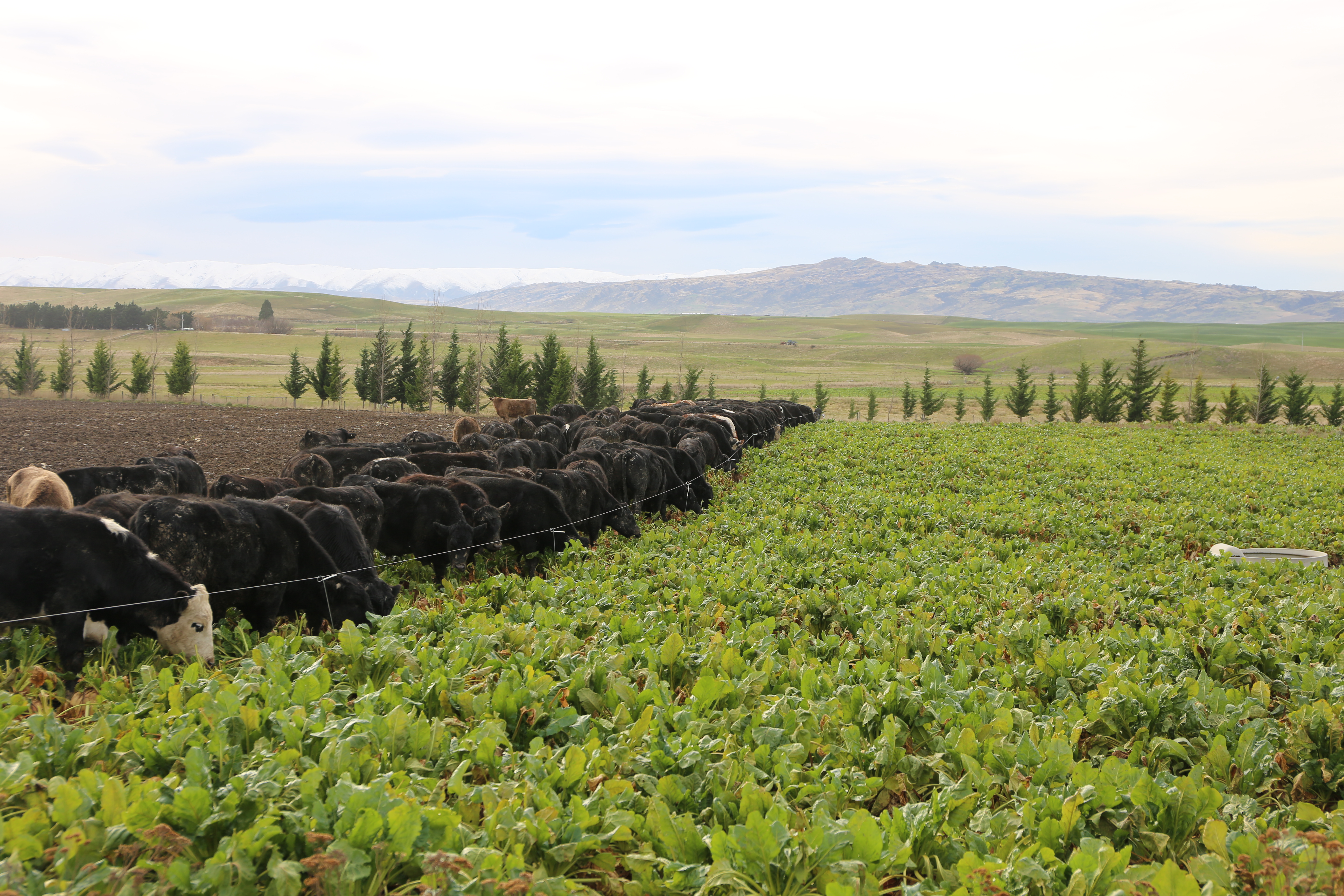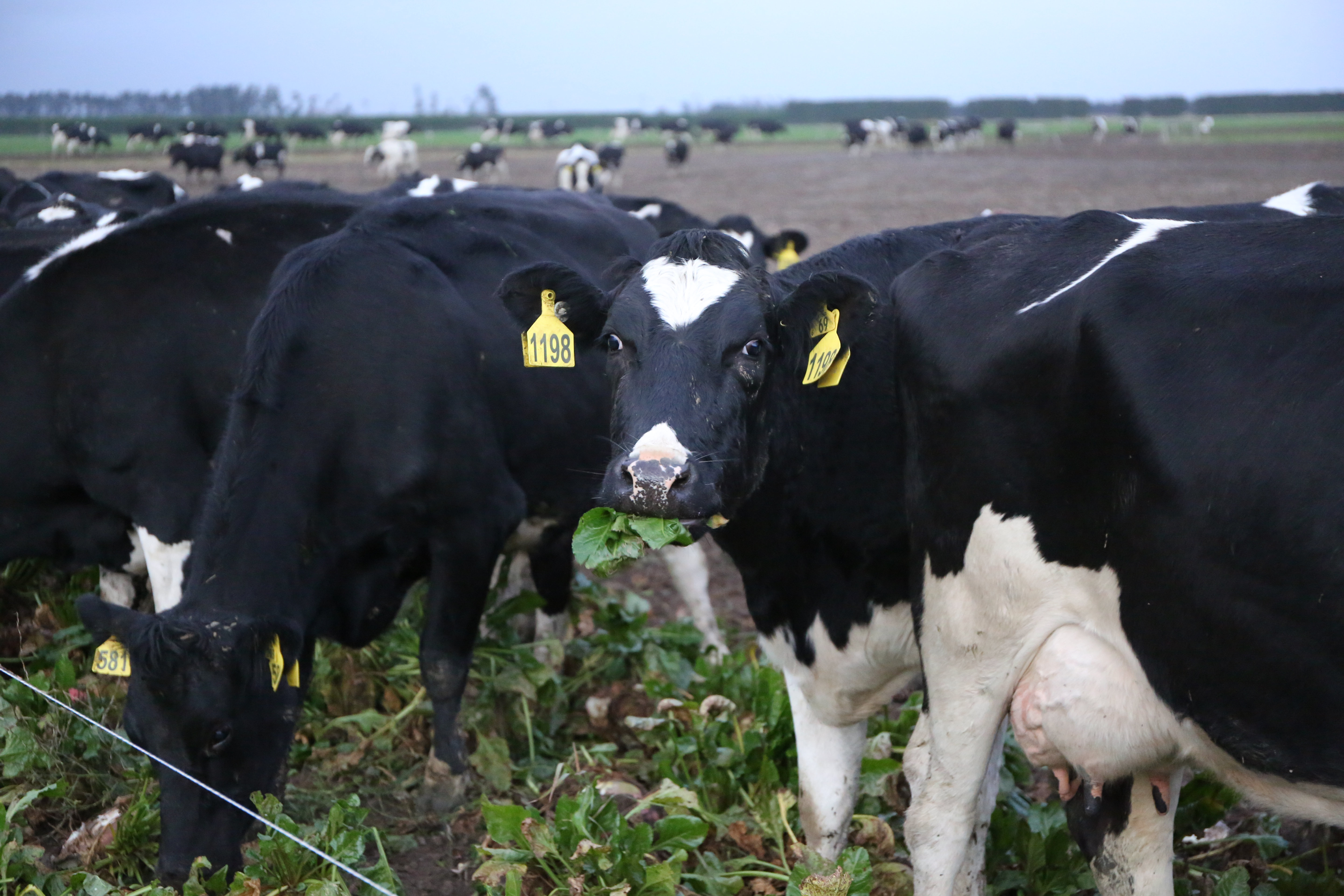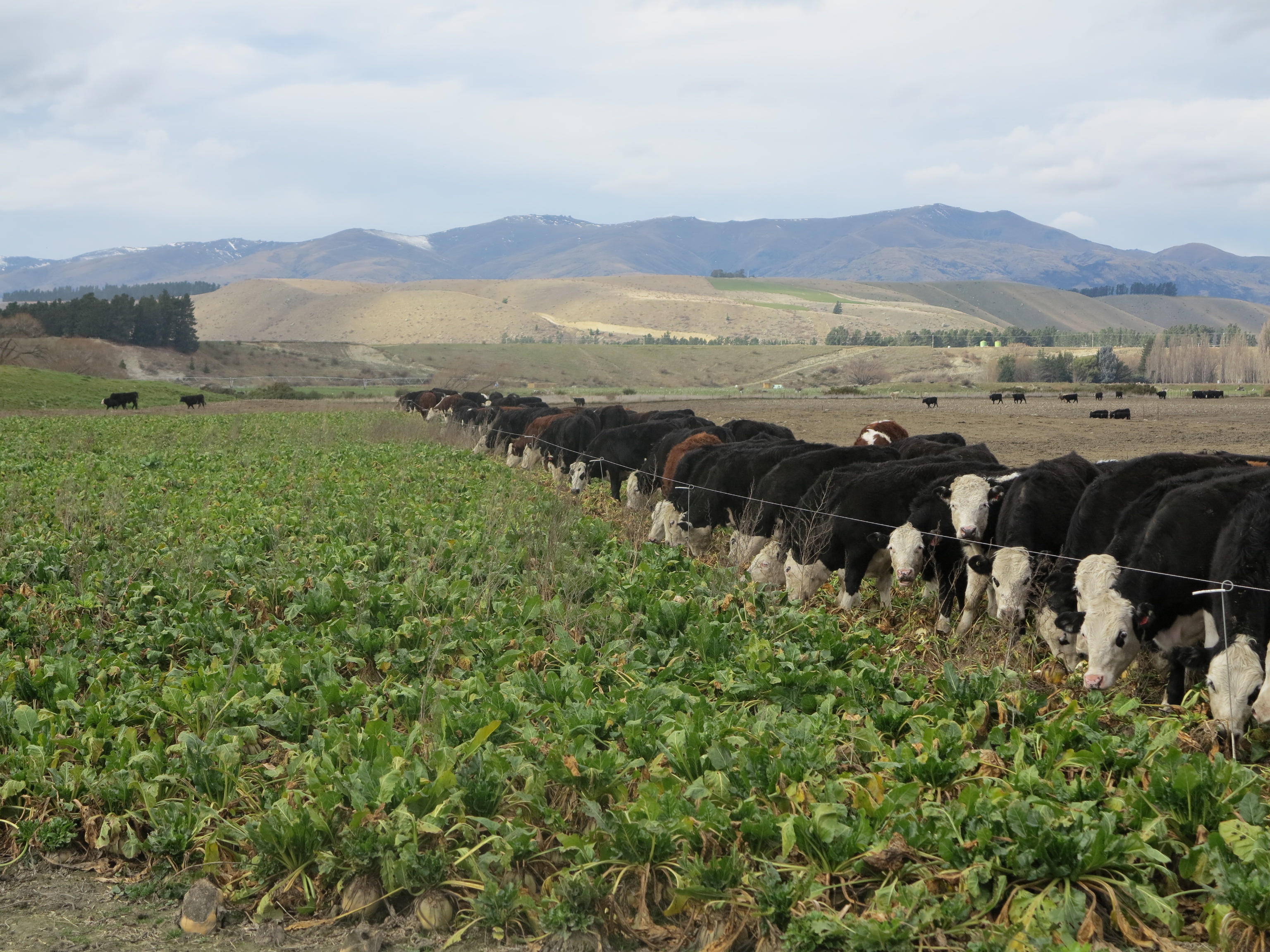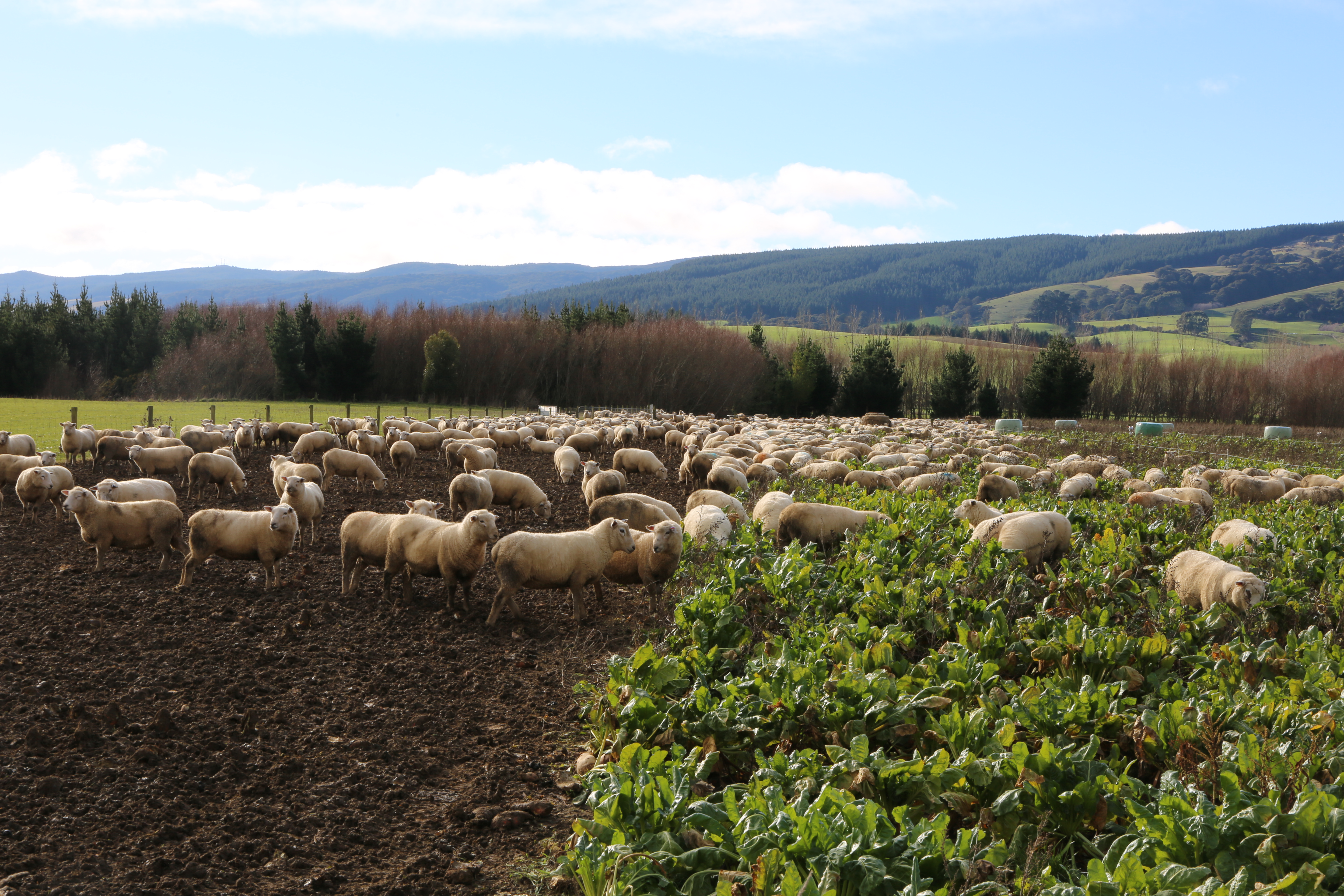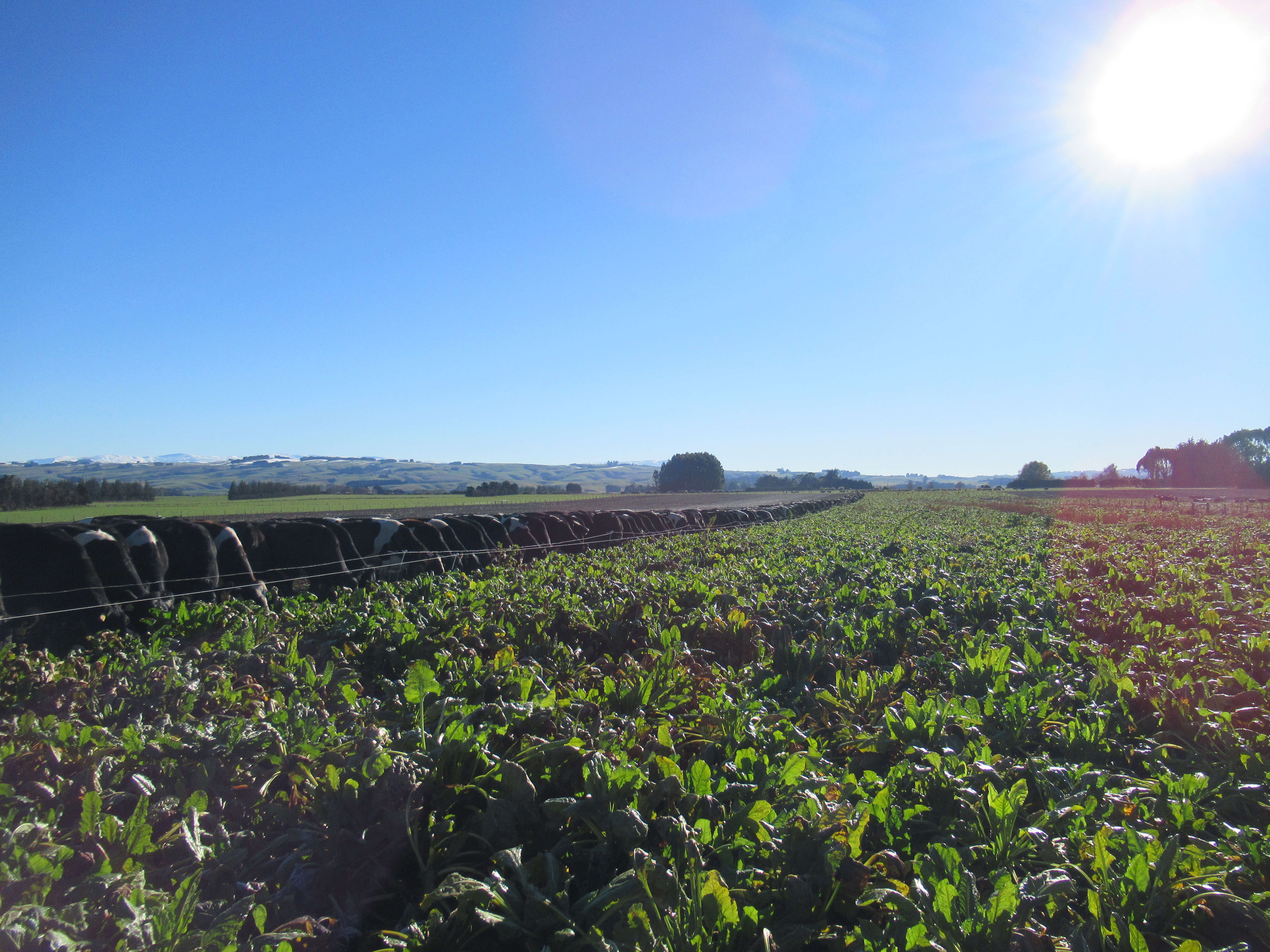Ensure appropriate Transition to Fodderbeet Grazing
Transition is the process of introducing fodderbeet as a feed to animals.
Ruminant animals, especially cattle, will likely suffer from critical acidosis if the transition process is not managed well. At the least the animals will be ill and in the worst-case animals will die.
There is very good understanding how transition should be managed to minimise the risk of acidosis.
This process is most critical for cattle. Sheep are not prone to suffering from acidosis. Once the animals have been fully transitioned they will not get acidosis.
The following information is only a guide and we recommend you contact your KWS representative for specific advice.
Key Principles
Ensure all animals are eating fodderbeet through transition phase
Gradually decrease amount of other feed as the amount of fodderbeet made allocated is increased
Ensure animals are fully fed before the daily allocation fodderbeet in the transition phase
Ensure adequate supply of Phosphorous (P) and Calcium (Ca), particularly for pregnant dairy cows
Vaccinate for clostridial diseases before grazing
Animal Health
Phosphorus
Phosphorous levels in fodderbeet are typically low and therefore special attention is required here. Phosphorous supplementation maybe required if the proportion of the leaf is less than 25 percent of the total dry matter of the plant and supplement quality is poor.
Clostridial diseases
Because of the relatively high sugar diet, clostridial diseases can be problematic on fodderbeet and for this reason young cattle, ewes and lambs should receive a clostridial vaccination before entry onto the crop.
Acidosis
Acidosis is the primary health concern related to feeding fodderbeet. All efforts must go into prevention management.
If animals suffer from mild acidosis, reduce their fodderbeet intake to 75% of their current allocation for 4 days before re-transitioning them. Acute cases of acidosis will cause a relatively quick death.
Dairy cattle
The process of transitioning dairy cows onto fodderbeet should be well managed and careful to avoid any critical mistakes.
It is important to start slowly with 1 – 2 kg dry matter per cow allocated per day and increasing allocation by 1 kg per cow per day.
Cows should be closely monitored to ensure all cows are eating fairly and to ensure all cows are moving through the transition process. Try to avoid some cows eating excessive quantities and other cows eating only minimal amounts.
Full transition should be achieved in 21 days and is noted when cows are fully fed and begin to leave beet behind.
It is of particular importance when feeding fodderbeet to pregnant cows that calcium (Ca) and phosphorous (P) are in adequate supply as fodderbeet will not supply enough. Some supplementation of these two minerals will most likely be required.
Day 1
- 1 kg DM per animal
- Increase by 1 kg DM every second day
- Decrease supply of other available feed (pasture or supplement) by same proportion
- Follow this process until day 14
Day 14
- Will have reached approx. 8 kg DM/animal fodderbeet
- Feeding 1 kg DM pasture or supplement
- Hold this feeding level for 7 days
Day 21, 22, 23...
- Again increase allocation by 1 kg every second day until animals start to leave beet behind
- At this point, cows have achieved maximum dry matter intakes and will have achieved full transition
Mature beef
The process of transitioning beef cows onto fodderbeet should be well managed and careful to avoid any critical mistakes.
It is important to start slowly with 1 – 2 kg dry matter per animal allocated per day and increasing allocation by 1 kg per animal per day.
Animals should be closely monitored to ensure all are eating fairly and to ensure all animals are moving through the transition process. Try to avoid some animals eating excessive quantities and others eating only minimal amounts.
Full transition should be achieved in 21 days and is noted when animals are fully fed and begin to leave beet behind.
A well grown crop that has a good yield, including a healthy leaf canopy, should provide adequate energy and protein to grow a mature beef animal.
It is important to provide some roughage in the form of hay of straw for dietary fibre
Day 1
- 1 kg DM per animal
- Increase by 1 kg DM every second day
- Decrease supply of other available feed (pasture or supplement) by same proportion
- Follow this process until day 14
Day 14
- Will have reached approx. 8 kg DM/animal fodderbeet
- Feeding 1 kg DM pasture or supplement
- Hold this feeding level for 7 days
Day 21, 22, 23...
- Again increase allocation by 1 kg every second day until animals start to leave beet behind
- Have reached max dry matter intakes and will have achieved full transition
Young cattle (beef or dairy)
Acidosis is less of a problem with younger cattle tend to adapt to fodderbeet slower than older animals. Sometimes it can be necessary to break the bulbs with a tractor to introduce the animals and allow them to get a ‘taste’ for the beet. Nevertheless, careful management is required to ensure good intakes and a successful transition.
Begin with allocating 0.5kg dry matter per animal. Every second day increase the allocation by 0.5 kg dry matter. Decrease the amount of supplement available by the same amount.
For young cattle, the quantity of protein supplied by even an well grown crop, is unlikely to be adequate. Therefore a high quality supplement such as lucerne hay or silage or grazed pasture should used.
Day 1
- 0.5 kg DM per animal
- Increase by 0.5 kg DM every second day
- Decrease supply of other available feed (pasture or high-quality supplement) by the same proportion
Day 14
- Will have reached approx. 4 kg DM/animal fodderbeet
- Feeding 1 kg DM pasture/quality supplement
- Hold this feeding level for 7 days
Day 21, 22, 23...
- Again, increase allocation by 0.5 kg every second day until cattle begin to leave beet behind
- Animals have reached maximum intakes and achieved full transition
Sheep
Compared to cattle, the transition of sheep is straight forward as they are less prone to suffer from rumen acidosis, mainly because they regulate their intakes better.
Lambs, as for hogget’s and ewes, require access to fodderbeet for around 2 hours per day for 3 – 4 days after which they can then be shut on the fodderbeet crop and shifted in 1 or 2 day shifts.
Discover more
Want to know more? Get in touch

